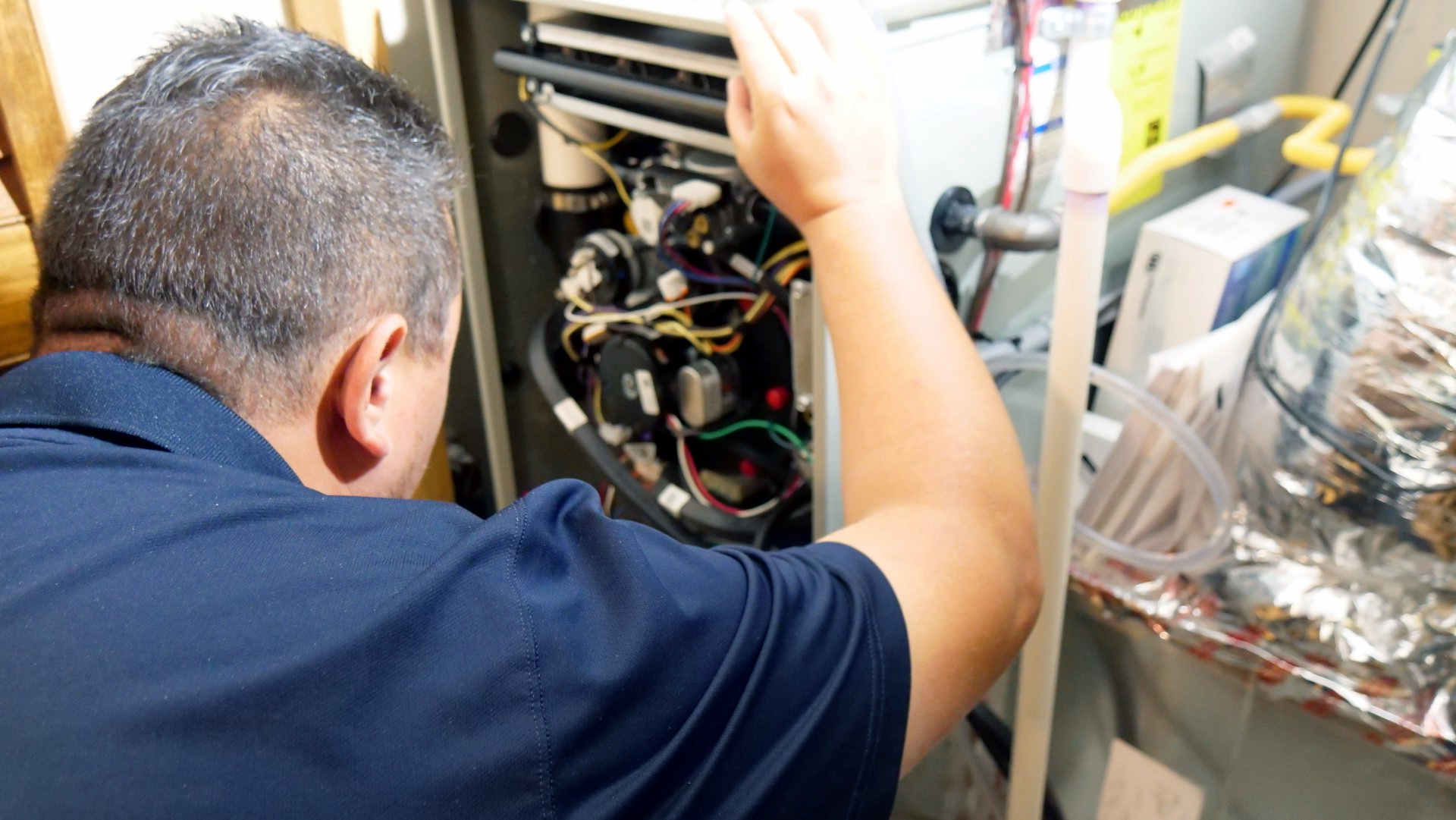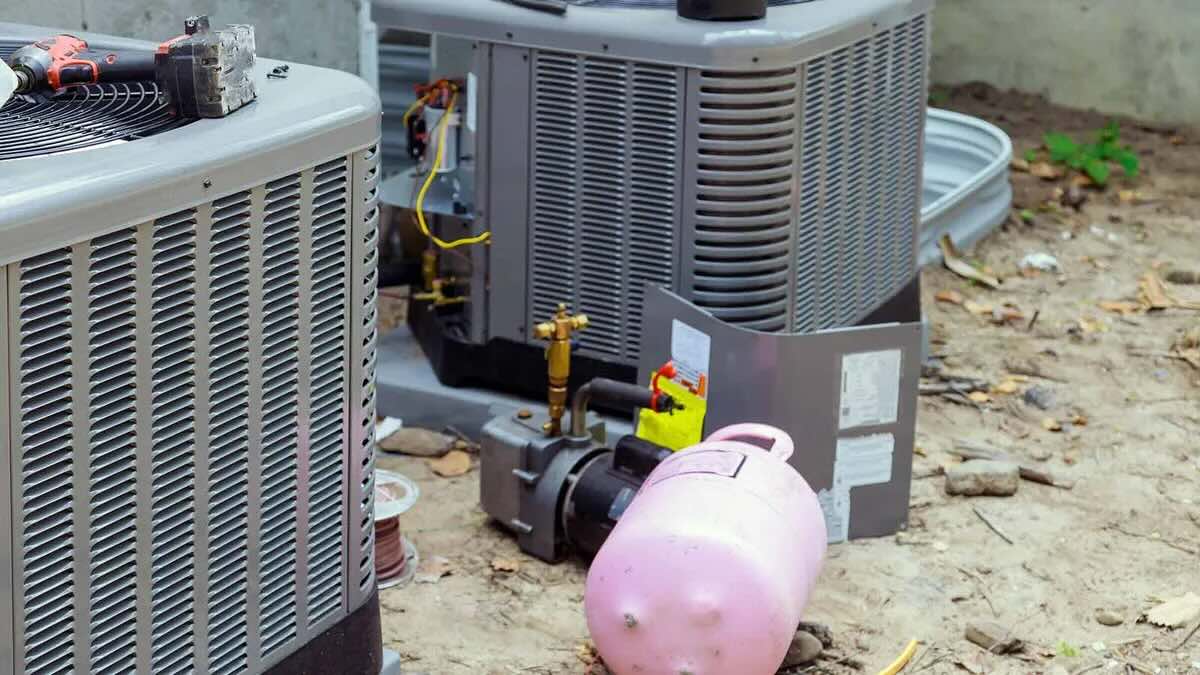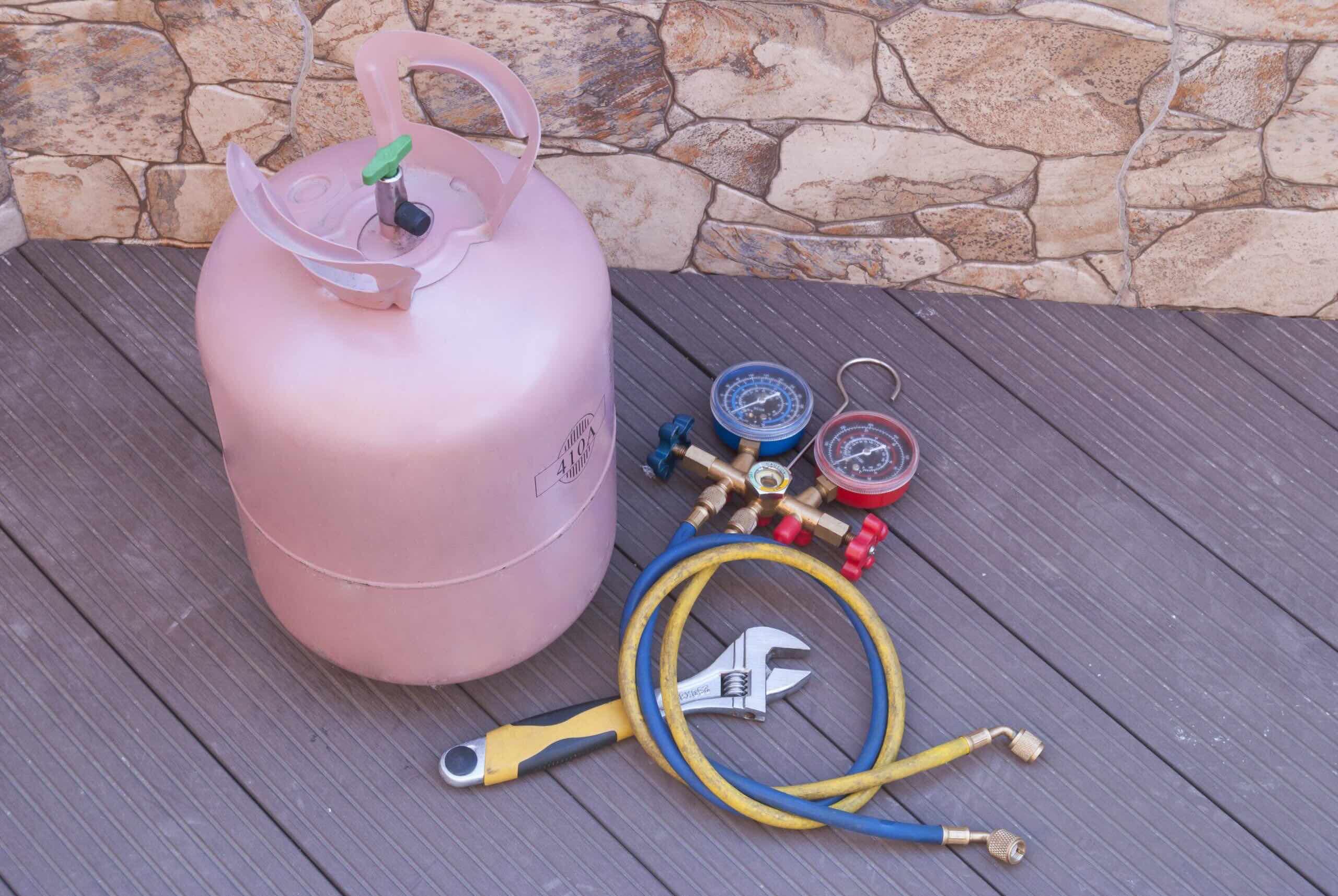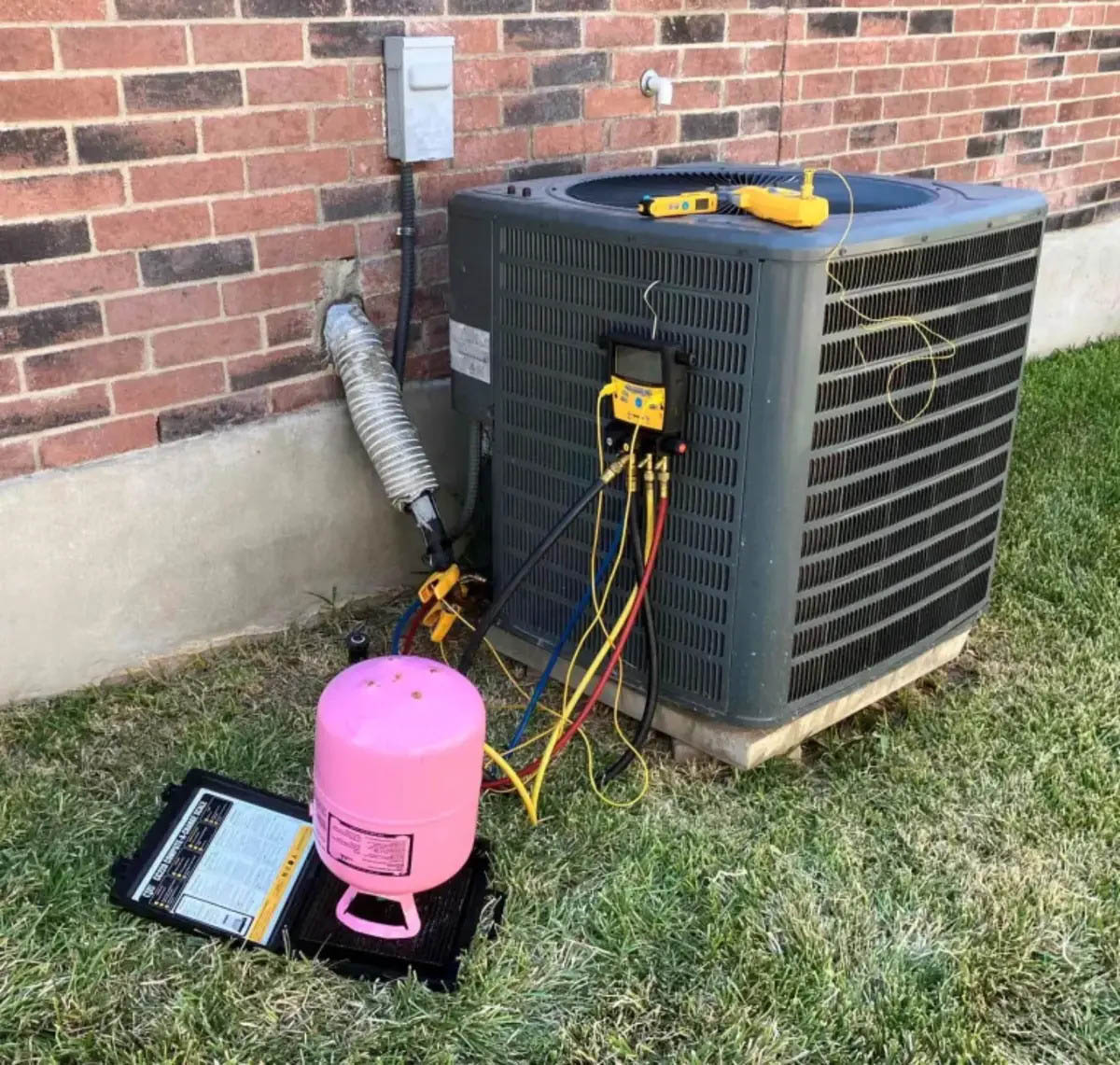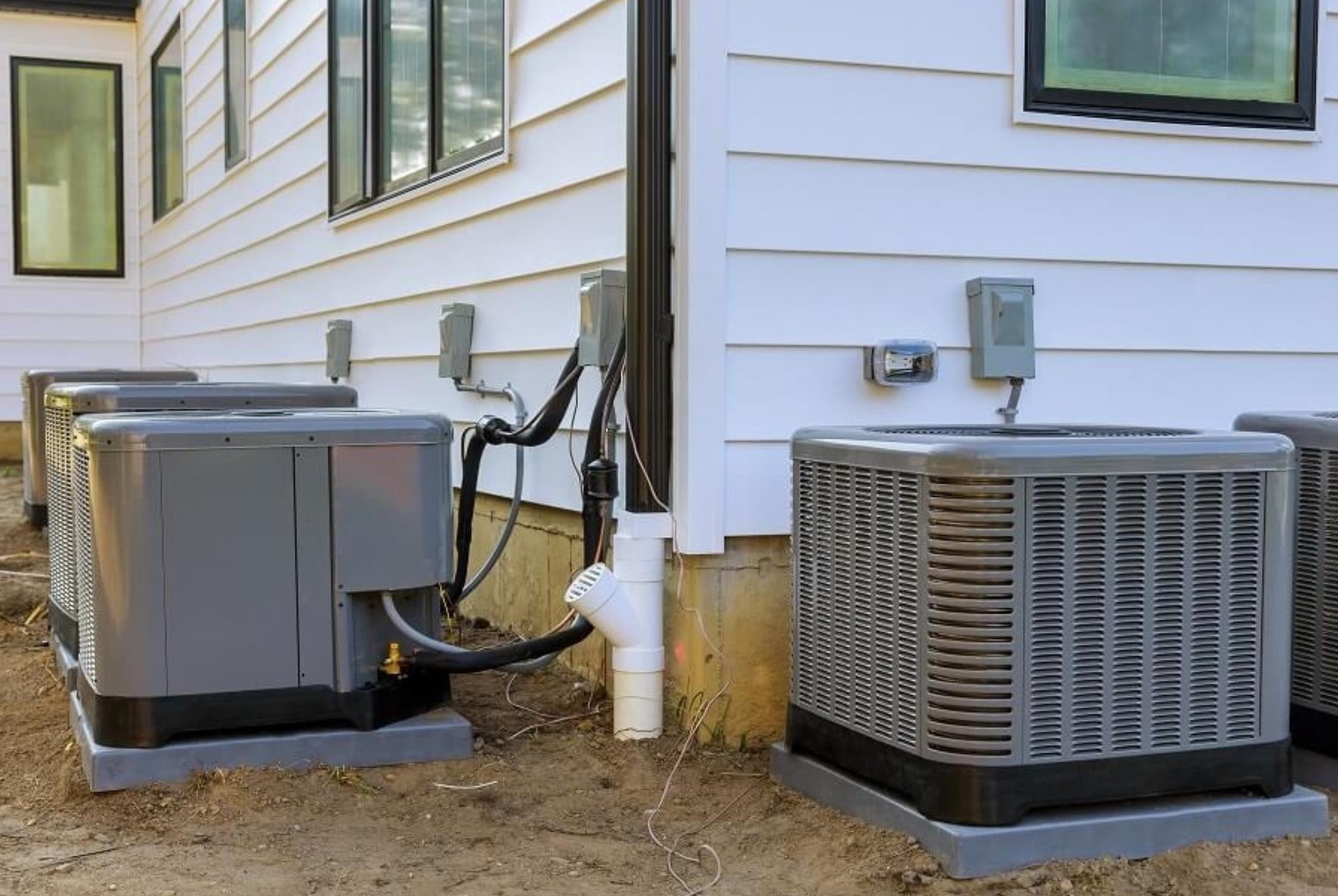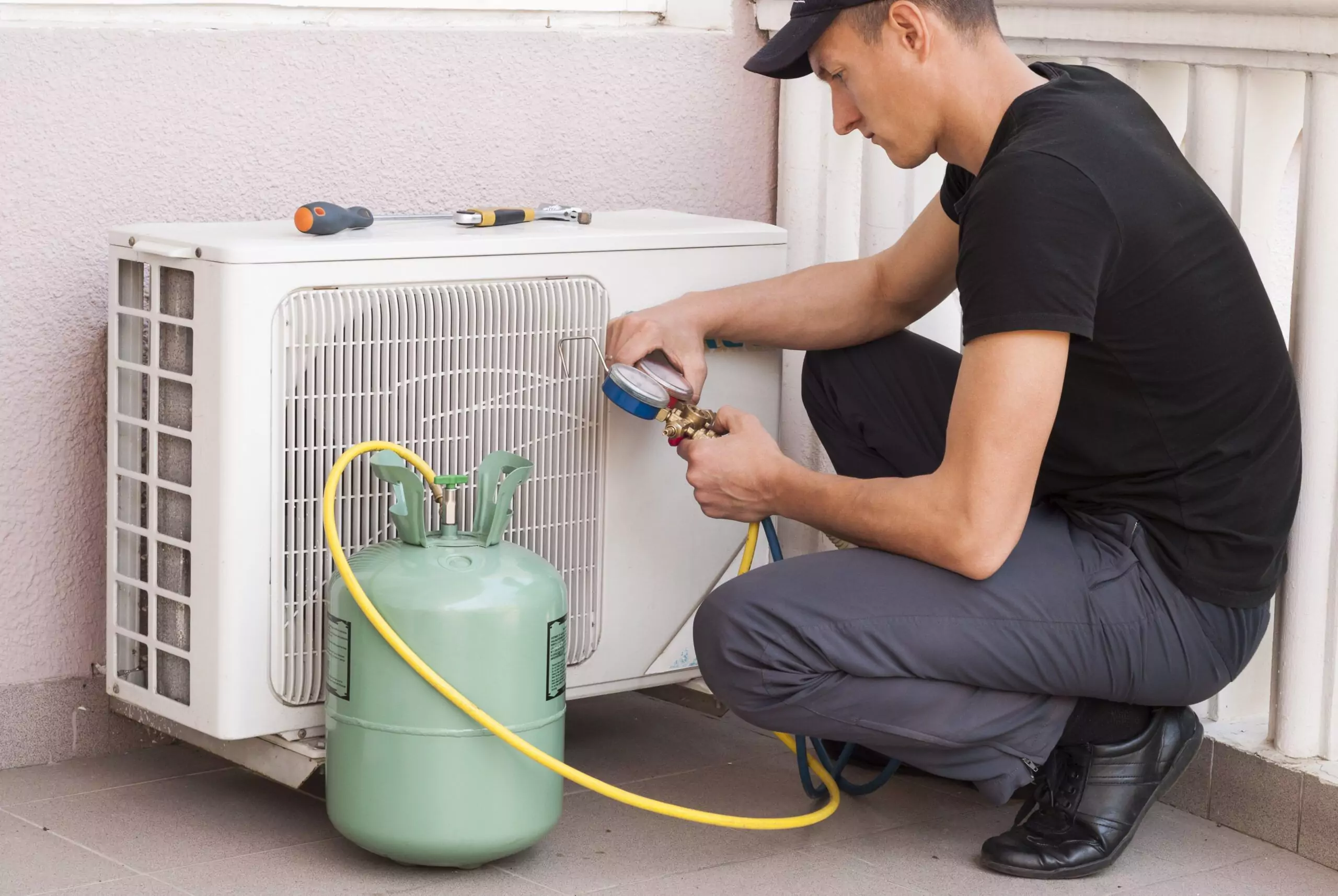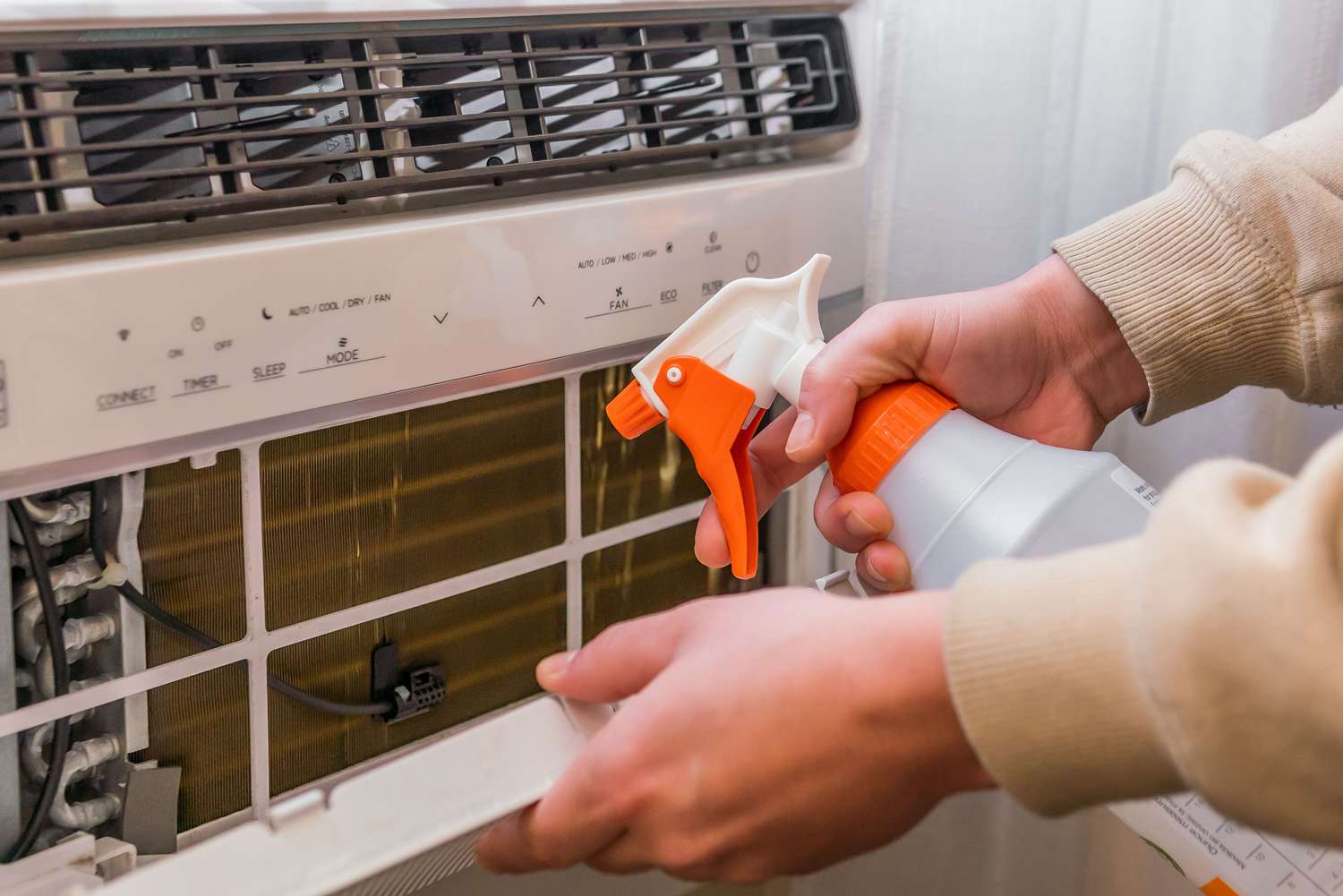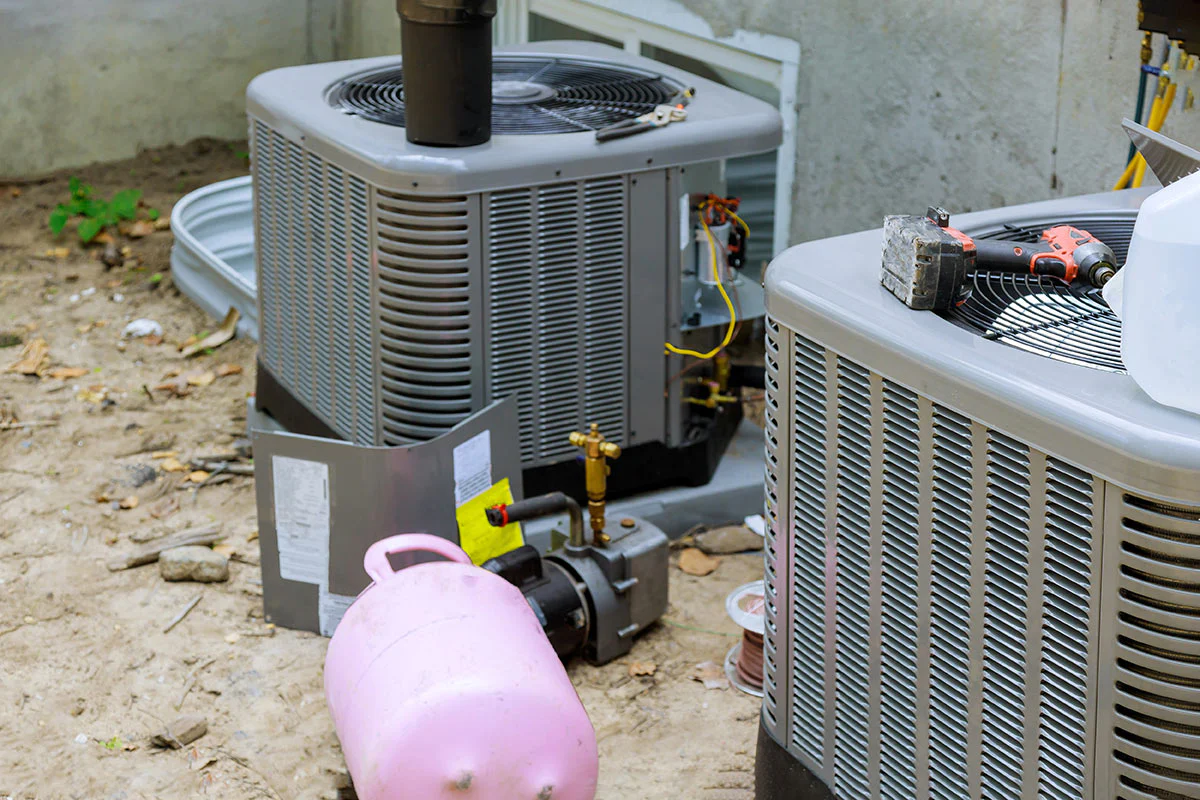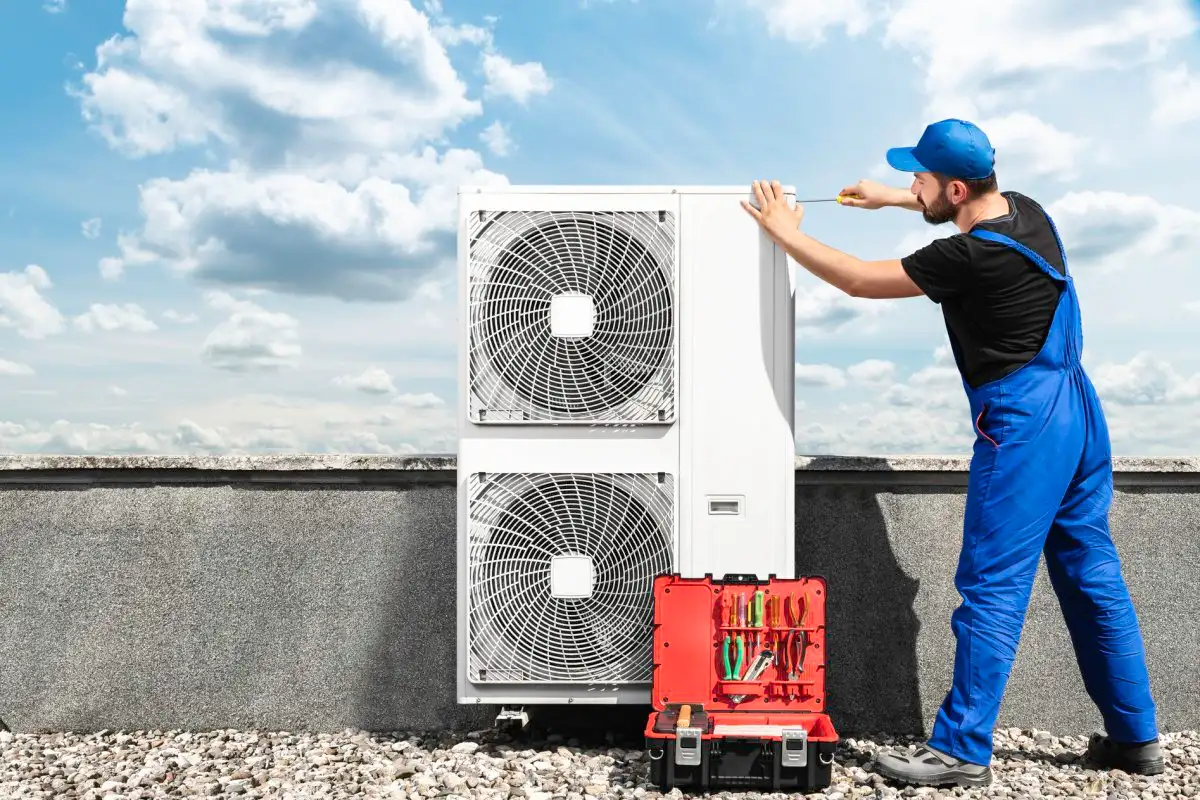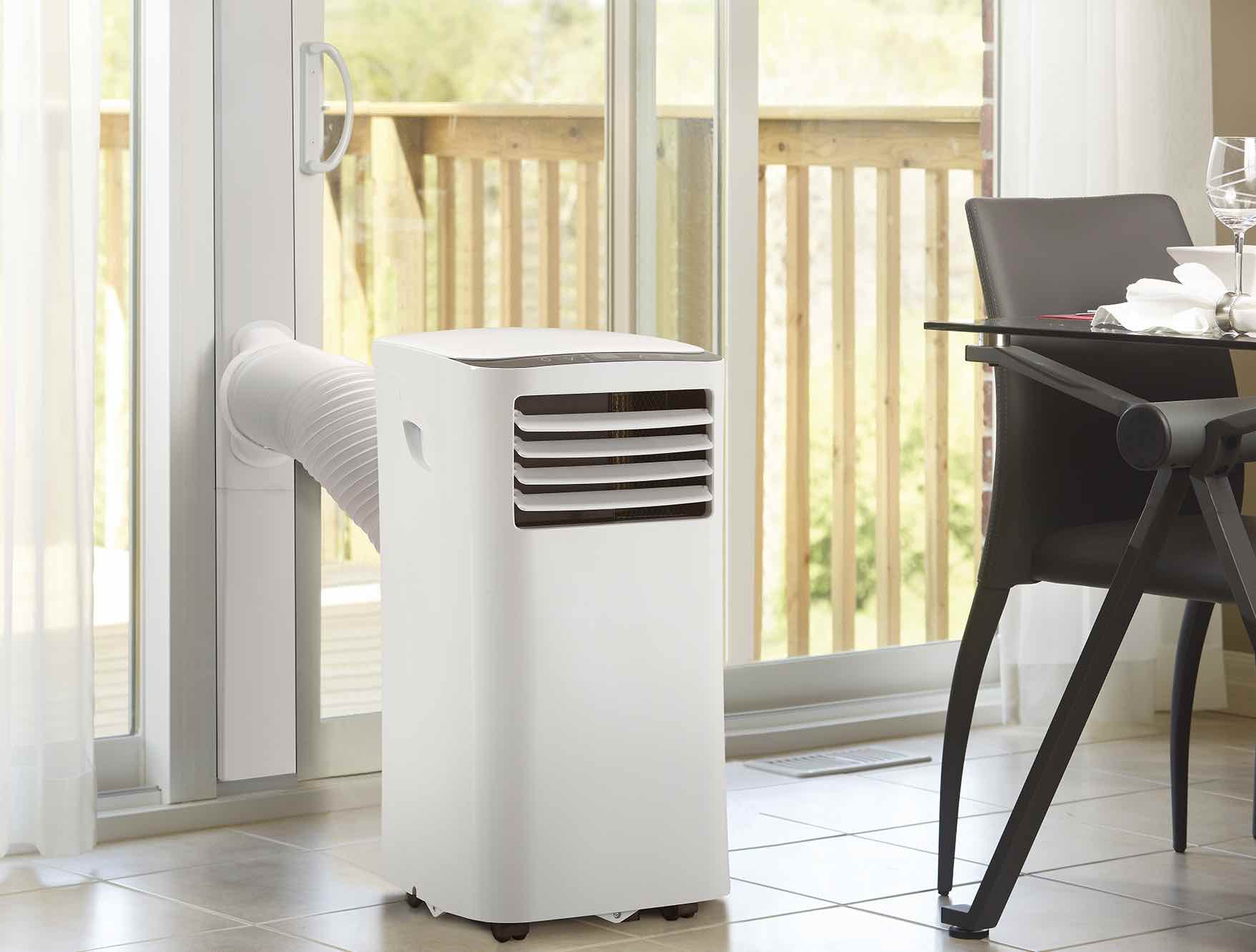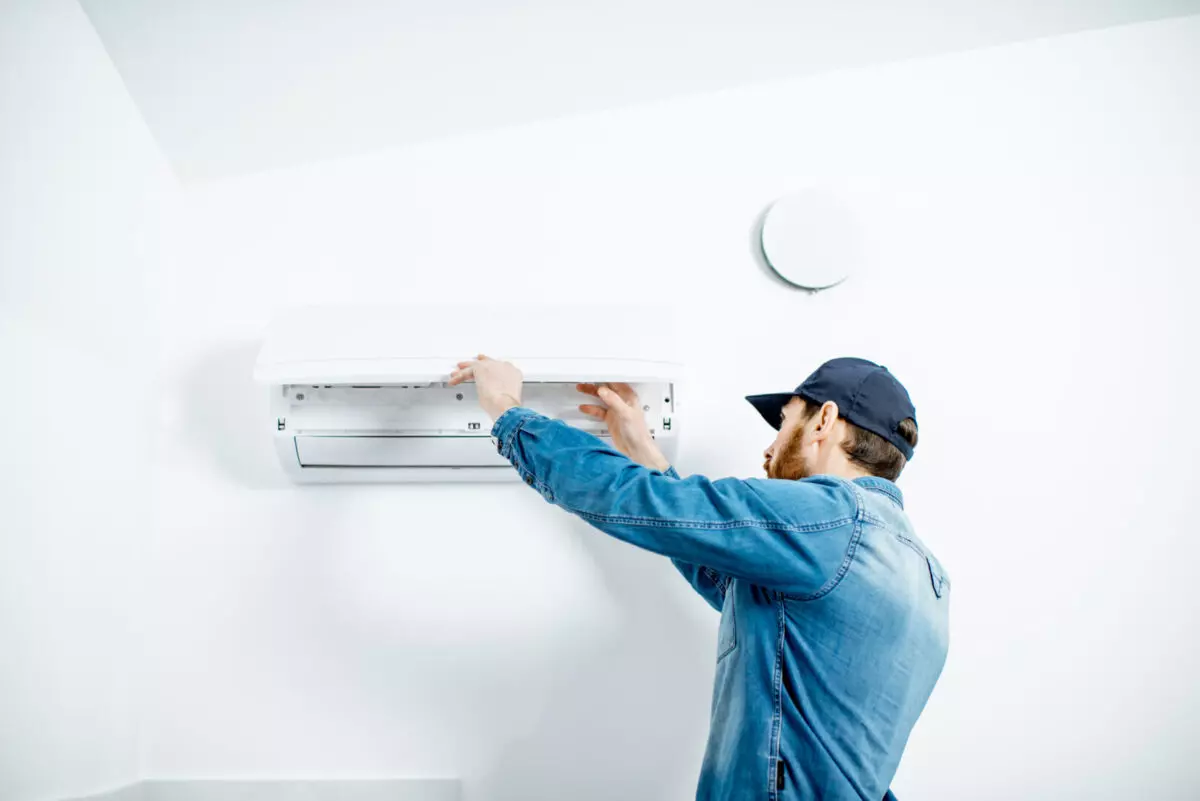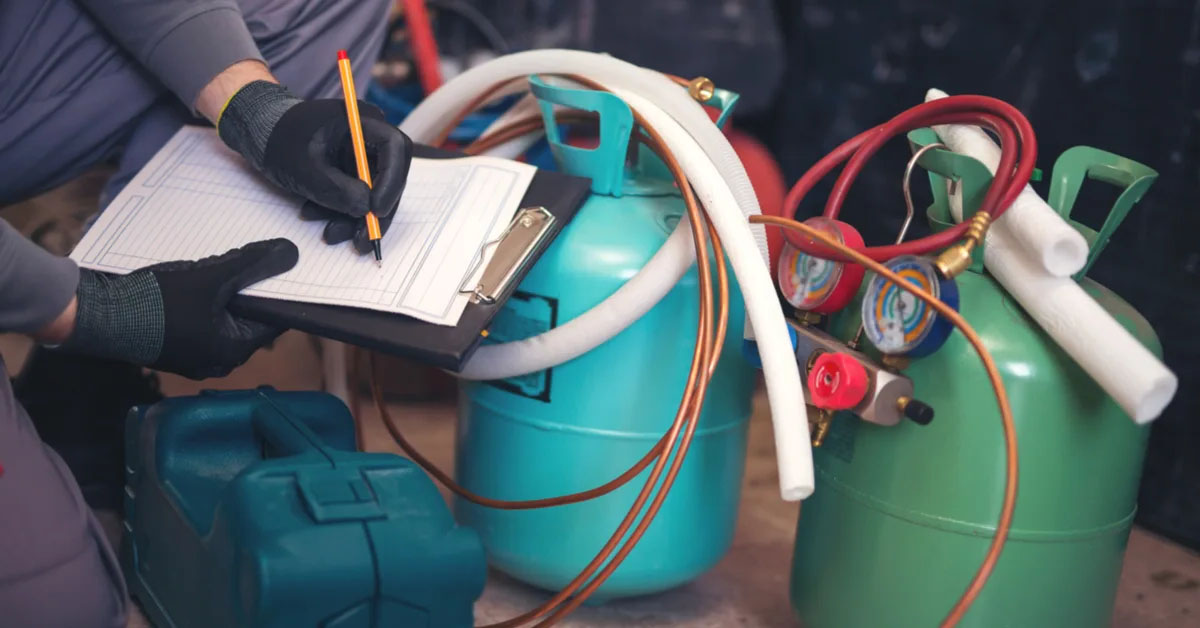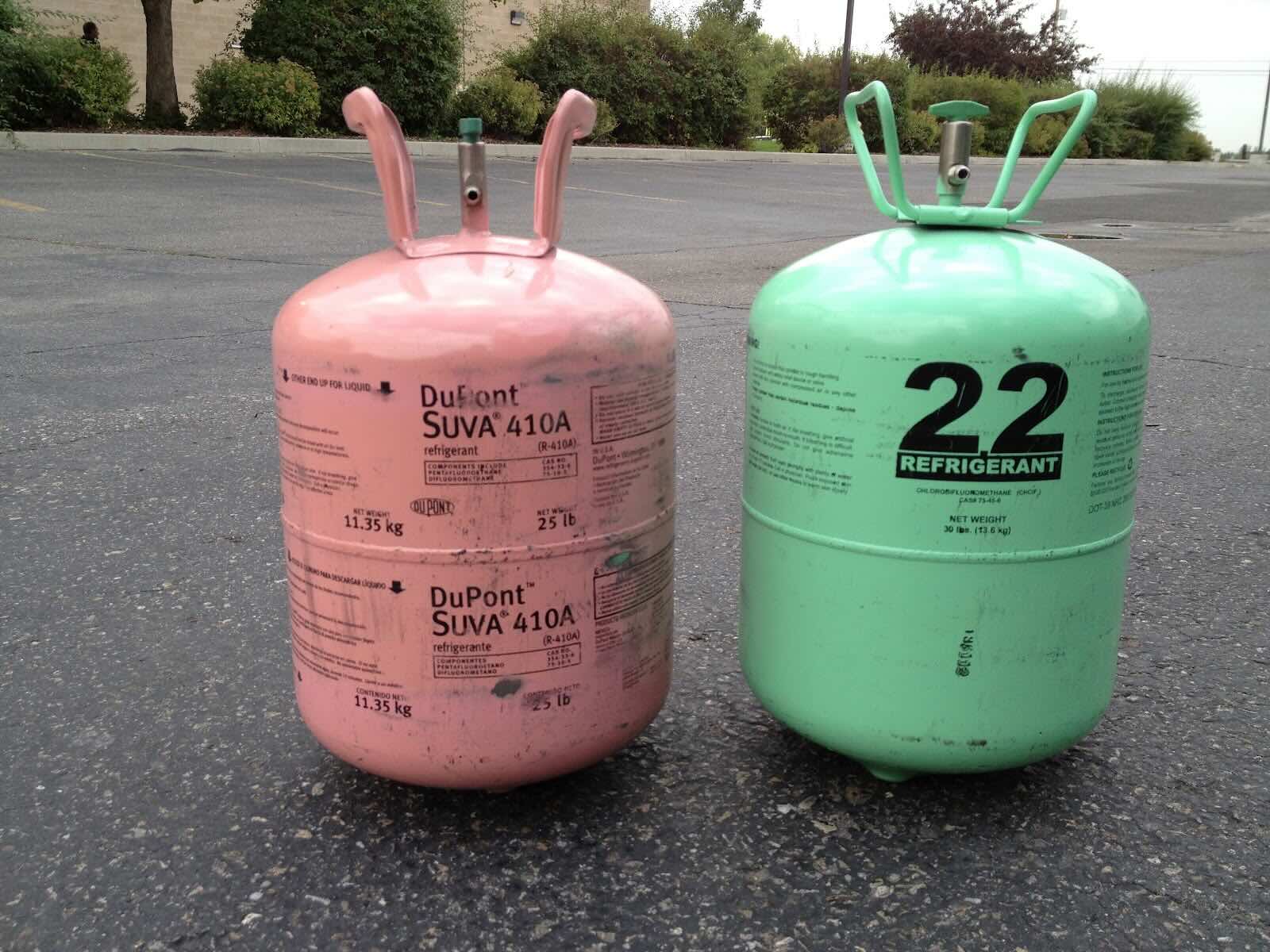Home>Home Maintenance>How Do You Add Freon To A Home Air Conditioner
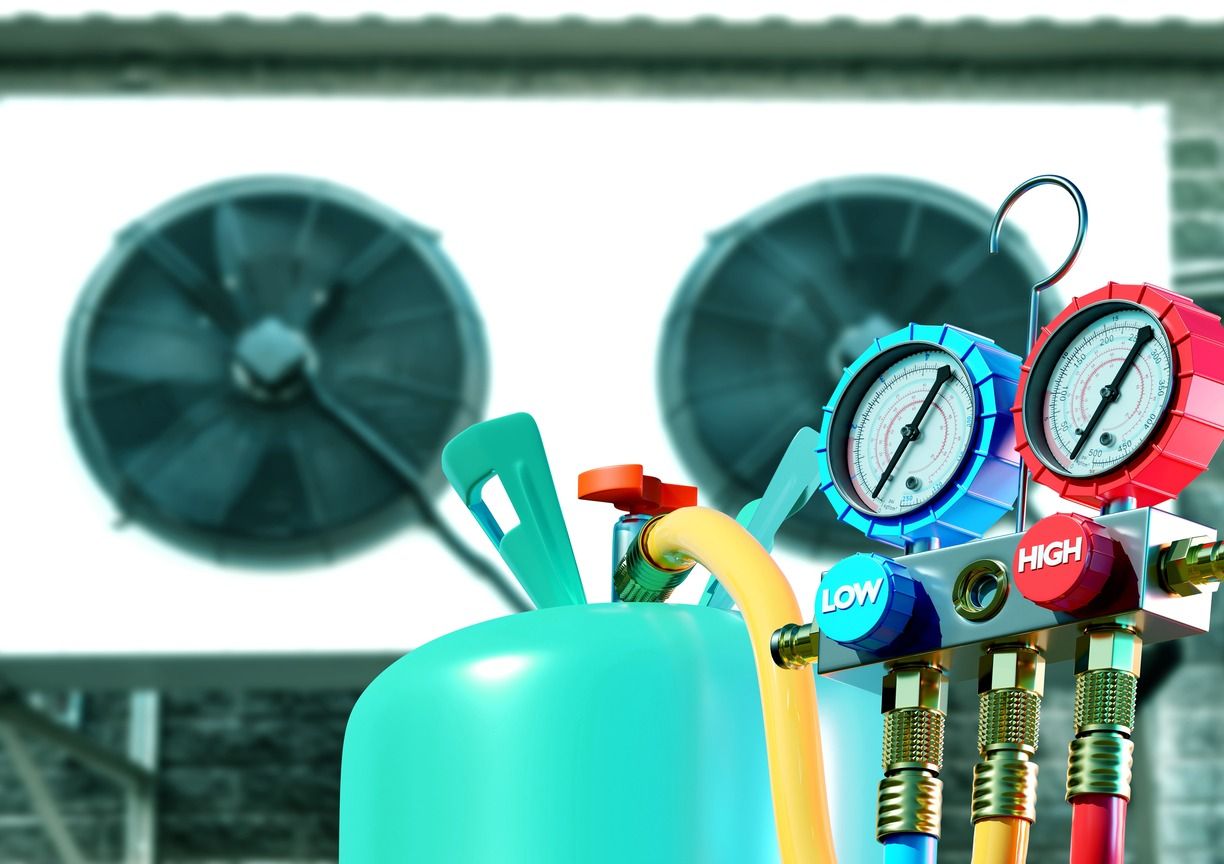

Home Maintenance
How Do You Add Freon To A Home Air Conditioner
Modified: August 29, 2024
Learn how to add Freon to your home air conditioner with this step-by-step guide. Ensure proper home maintenance for optimal cooling performance.
(Many of the links in this article redirect to a specific reviewed product. Your purchase of these products through affiliate links helps to generate commission for Storables.com, at no extra cost. Learn more)
Introduction
Welcome to the comprehensive guide on how to add Freon to a home air conditioner. As a homeowner, it’s essential to understand the inner workings of your AC unit and have the knowledge to perform basic maintenance tasks, such as adding refrigerant, commonly known as Freon. By learning how to add Freon to your air conditioner, you can ensure that it operates efficiently and provides optimal cooling during hot summer months.
Before we delve into the step-by-step process of adding Freon, let’s first understand what Freon is and its role in your home air conditioner.
Key Takeaways:
- Adding Freon to your home air conditioner is essential for maintaining its cooling efficiency. Look out for signs like decreased cooling, warm air blowing, frequent cycling, ice build-up, and hissing sounds to identify if your AC needs more Freon.
- When adding Freon, ensure safety by turning off the power, wearing protective gear, and working in a well-ventilated area. Follow the step-by-step process, monitor pressure, check for leaks, and test the AC to ensure it’s functioning properly.
Understanding Freon and its Role in Home Air Conditioners
Freon is a brand name for a group of refrigerants, specifically hydrochlorofluorocarbons (HCFCs), commonly used in air conditioning units to transfer heat and provide cooling. It plays a critical role in the cooling process by absorbing heat from the indoor environment and releasing it outdoors.
In an air conditioner, Freon operates in a closed-loop system consisting of an evaporator coil, a compressor, a condenser coil, and an expansion valve. The process starts with the evaporator coil, where the low-pressure liquid Freon absorbs heat from the indoor air, transforming it into a gas. The gas is then compressed by the compressor, which increases its temperature and pressure.
The high-pressure, high-temperature gas passes through the condenser coil, located outside the house, where it releases the heat absorbed from the indoor air into the outdoor environment. As the gas cools down and condenses, it transforms back into a liquid state and flows through the expansion valve, which reduces its pressure and temperature. The cooled liquid Freon then re-enters the evaporator coil, and the cycle repeats.
It is important to maintain the correct level of Freon in your air conditioner for it to function efficiently. Over time, leaks or gradual loss of Freon can occur, resulting in a decrease in cooling performance. Recognizing the signs that your air conditioner may need more Freon is crucial in maintaining its optimal operation.
Next, we will explore the signs that indicate your air conditioner may require the addition of Freon.
Signs that Your Air Conditioner may Need Freon
It’s important to be aware of the signs that indicate your air conditioner may need more Freon. While low refrigerant levels are a common cause, it’s always best to consult a professional to diagnose the issue accurately. Here are a few signs to look out for:
- Decreased Cooling Performance: If your air conditioner is struggling to cool your home as effectively as it used to, it may be a sign of low Freon levels. Inadequate refrigerant can hinder the cooling process, resulting in reduced airflow and insufficient cool air circulation.
- Warm Air Blowing: If the air blowing from your air conditioner feels warmer than usual, it could indicate a Freon issue. Low refrigerant levels can cause the air conditioner to blow lukewarm or room temperature air instead of the desired cool air.
- Frequent Cycling: If your air conditioner is turning on and off more frequently than usual, it could be a sign of low Freon levels. The system may be struggling to maintain the desired temperature due to insufficient refrigerant, leading to frequent cycling in an attempt to cool the space.
- Ice Build-Up: If you notice ice formation on the evaporator coil or refrigerant lines of your air conditioner, it is a clear indication of a Freon issue. Low refrigerant levels can cause the evaporator coil to freeze and hinder the cooling process.
- Hissing Sounds: If you hear hissing or bubbling sounds coming from your air conditioner, it could indicate a refrigerant leak. Leaking Freon will not only affect the cooling performance but can also be harmful to the environment and your health.
If you observe any of these signs or suspect that your air conditioner may need more Freon, it’s essential to take the necessary steps to address the issue. Adding Freon to your air conditioner can help restore its cooling efficiency and ensure optimal performance.
In the next section, we’ll explore the step-by-step process of adding Freon to a home air conditioner.
Steps to Add Freon to a Home Air Conditioner
Adding Freon to a home air conditioner should be done carefully to ensure proper functioning and prevent any potential damage to the unit. While it is always recommended to have a professional HVAC technician perform this task, if you have the necessary knowledge and experience, you can follow these steps:
- Ensure Safety: Before starting, ensure the power to the air conditioner is turned off. This will prevent any electrical accidents while working on the unit.
- Locate the Service Valves: Find the service valves on your AC unit. These are usually located near the refrigerant lines connected to the outdoor unit. There are two valves – the larger suction line valve and the smaller liquid line valve.
- Prepare the Refrigerant and Charging Hose: Obtain the correct type and quantity of refrigerant specified for your air conditioner. The refrigerant canister should be equipped with a charging hose. Ensure that the charging hose is securely attached to the canister.
- Attach the Charging Hose: Attach the charging hose to the service valve on the liquid line of the air conditioner. Ensure a tight and secure connection to prevent any refrigerant leakage during the process.
- Open the Service Valve: Slowly open the service valve on the liquid line to allow the flow of refrigerant into the air conditioner. Start by opening it just a quarter of a turn.
- Monitor Pressure: As the refrigerant flows into the system, monitor the pressure readings on the pressure gauge attached to the charging hose. Refer to the manufacturer’s specifications for the recommended pressure levels.
- Check for Leaks: While adding the refrigerant, keep an eye out for any signs of leaks, such as hissing sounds or bubbling. If you notice any leaks, stop the process immediately and consult a professional to address the issue.
- Closing the Service Valve: Once you have added the necessary amount of refrigerant, close the service valve on the liquid line. Make sure it is tightly closed to prevent any refrigerant leakage.
- Repeat the Process (if necessary): If you have multiple AC units or zones, repeat the process for each individual unit. Always ensure you have the correct amount of refrigerant for each unit.
- Professional Inspection: After adding Freon to your air conditioner, it is advisable to have a professional HVAC technician inspect the system to ensure everything is in proper working order.
It is important to note that adding Freon to an air conditioner requires a good understanding of the system and the proper handling of refrigerants. If you are unsure or uncomfortable with performing this task, it is highly recommended to seek professional assistance to avoid any potential risks.
Now that you know the steps involved, let’s discuss the precautions you should take before adding Freon to your air conditioner.
Precautions to Take Before Adding Freon
Before adding Freon to your air conditioner, it is crucial to take several precautions to ensure your safety and the proper functioning of the unit. Here are some important precautions to keep in mind:
- Turn off the Power: Before doing any work on the air conditioner, make sure to turn off the power to the unit. This will prevent any electrical accidents while handling the refrigerant or working on the components.
- Wear Protective Gear: Always wear protective gear, such as safety goggles, gloves, and a mask, when handling refrigerants. Freon can be harmful if it comes into contact with your skin or eyes, and inhaling its fumes can be dangerous to your respiratory system.
- Work in a Well-Ventilated Area: Whenever adding Freon to your air conditioner, ensure that you are working in a well-ventilated area. Open windows or doors to allow fresh air circulation and minimize the exposure to refrigerant fumes.
- Check for Leaks: Before adding Freon, inspect the refrigerant lines and connections for any signs of leaks. If you find any leaks, it is crucial to fix them before adding the refrigerant. Refrigerant leaks not only affect the performance of your air conditioner but can also harm the environment and your health.
- Follow Manufacturer’s Guidelines: Always refer to the manufacturer’s guidelines and specifications for the correct type and amount of refrigerant to use. Adding an incorrect refrigerant or overcharging the system can lead to severe damage and inefficiency in your air conditioner.
- Dispose of Refrigerant Properly: When handling refrigerant, it is essential to follow proper disposal methods. Freon is a hazardous substance, and its improper disposal can harm the environment. Contact your local HVAC professional or waste management authorities for guidance on how to dispose of used refrigerant safely.
- Consider Professional Help: If you have little to no experience working with air conditioners or handling refrigerants, it is highly recommended to seek professional help. HVAC technicians have the necessary expertise to safely add Freon to your unit and ensure its proper functioning.
By taking these precautions, you can protect yourself, prevent any potential issues, and ensure a smooth and safe process when adding Freon to your air conditioner. Now that we have covered the precautions, let’s discuss the tools and materials you will need for this task.
Before adding freon to your home air conditioner, make sure to turn off the unit and locate the service valves. Use a pressure gauge to check the current freon level and add more if needed, following the manufacturer’s guidelines.
Tools and Materials Required to Add Freon
Before you begin adding Freon to your home air conditioner, it’s important to gather the necessary tools and materials to ensure a smooth and successful process. Here’s a list of the items you will need:
- Refrigerant: Obtain the correct type and quantity of refrigerant recommended for your air conditioner. The type of refrigerant required will depend on the specific model and system specifications of your AC unit. It is crucial to ensure you are using the appropriate refrigerant to maintain the system’s efficiency and prevent any damage.
- Charging Hose: A charging hose is essential for transferring the refrigerant from the canister to the air conditioner. It is usually included with the refrigerant canister, but if not, you can purchase one separately. Ensure that the charging hose is compatible with the refrigerant canister and has the appropriate fittings for a secure connection to the service valve.
- Pressure Gauge: A pressure gauge is used to monitor the pressure levels during the Freon addition process. It attaches to the charging hose and provides accurate readings of the refrigerant pressure within the system. Make sure to choose a pressure gauge that is compatible with the refrigerant type and has the necessary pressure range for your air conditioner.
- Protective Gear: Safety should always be a priority when handling refrigerants. Wear protective gear, including safety goggles, gloves, and a mask, to shield your eyes, skin, and respiratory system from contact with the Freon. This will help minimize any potential risks or harm that may arise during the process.
- Leak Detection Solution: Before adding Freon, it’s important to inspect the refrigerant lines and components for any leaks. A leak detection solution, typically a mixture of soap and water, can be used to identify leaks by producing bubbles where there is a leak. This allows you to locate and address any leaks before proceeding with the Freon addition.
- Wrenches or Adjustable Pliers: Depending on the type of service valves on your air conditioner, you may need wrenches or adjustable pliers to open and close the valves securely. This will ensure a tight connection of the charging hose to the service valve, preventing any refrigerant leakage during the process.
- Container for Used Refrigerant: When disposing of the used refrigerant, it’s important to have a designated container for proper storage and transportation. The container should be airtight and labeled for used refrigerant to prevent any accidental release or contamination. Consult local waste management authorities for proper disposal methods and guidelines.
By having these tools and materials ready before you start adding Freon to your air conditioner, you’ll ensure a smooth process and minimize any potential complications. Now that you know what you need, let’s dive into the step-by-step instructions for adding Freon to your home air conditioner.
Step-by-Step Instructions for Adding Freon to a Home Air Conditioner
Adding Freon to a home air conditioner requires careful attention to detail and adherence to proper procedures. Here is a step-by-step guide to help you through the process:
- Ensure Safety: Before you begin, turn off the power to the air conditioner to prevent any electrical accidents.
- Locate the Service Valves: Find the two service valves on your air conditioner. The larger valve is the suction line valve, while the smaller one is the liquid line valve. These valves are typically located near the refrigerant lines connected to the outdoor unit.
- Prepare the Refrigerant and Charging Hose: Gather the refrigerant canister and the charging hose. Ensure that the refrigerant is compatible with your air conditioner’s specifications and the charging hose is securely attached to the canister.
- Attach the Charging Hose: Connect the charging hose to the service valve on the liquid line of the air conditioner. Ensure a tight and secure connection to prevent any refrigerant leakage.
- Open the Service Valve: Slowly open the service valve on the liquid line, turning it no more than a quarter of a turn. This will allow the refrigerant to flow into the air conditioner.
- Monitor Pressure: As the refrigerant enters the system, monitor the pressure readings on the pressure gauge attached to the charging hose. Refer to the manufacturer’s specifications for the recommended pressure levels.
- Check for Leaks: While adding the refrigerant, keep an eye out for any signs of leaks. Look for hissing sounds, bubbling, or any visual indication of refrigerant leakage. If you detect a leak, immediately stop the process and consult a professional to address the issue.
- Closing the Service Valve: Once you have added the required amount of refrigerant, close the service valve on the liquid line. Make sure it is tightly closed to prevent any refrigerant leakage.
- Repeat the Process (if necessary): If you have multiple air conditioning units or zones, repeat the process for each individual unit. Always ensure you have the correct amount of refrigerant for each unit.
- Professional Inspection: After adding Freon to your air conditioner, it is advisable to have a professional HVAC technician inspect the system to ensure everything is functioning properly.
Remember, adding Freon to an air conditioner should be done with caution and proper knowledge. If you are not familiar with the process or unsure about any step, it is always best to seek the assistance of a qualified HVAC technician to avoid any potential risks or damage to your air conditioner.
Once you have completed the process, it’s important to test the air conditioner to ensure it is functioning correctly, which we will discuss in the next section.
Testing the Air Conditioner after Adding Freon
After adding Freon to your air conditioner, it’s essential to test the unit to ensure it is operating properly. Testing will help you verify that the refrigerant addition has resolved any cooling issues and that the system is functioning efficiently. Follow these steps to test your air conditioner:
- Power on the Air Conditioner: Turn the power back on to the air conditioner. Allow the unit to run for a few minutes to stabilize.
- Set the Thermostat: Adjust the thermostat to the desired temperature setting. Make sure it is set to the cooling mode. The air conditioner should start blowing cool air.
- Check for Cool Air: Feel the air coming out of the vents to ensure it is cool. The air should feel noticeably cooler than the room temperature. If it feels warm or not as cool as expected, there may still be an issue with the refrigerant level or other components that require further inspection by a professional technician.
- Monitor the Air Conditioner’s Performance: Observe the air conditioner’s performance over a period of time. Check if the air conditioner is maintaining the desired temperature and if it is cycling on and off as expected. Keep track of any changes in the cooling efficiency or any unusual noises or behaviors.
- Inspect for Leaks: While the air conditioner is running, visually inspect the refrigerant lines and connections for any signs of leaks. Look for any bubbling, hissing, or oil stains around the fittings. If you notice any leaks, immediately shut off the air conditioner and contact a professional to repair the leakage and ensure the safe operation of the unit.
- Monitor Energy Consumption: Keep an eye on your energy consumption after adding Freon to the air conditioner. If your energy bills remain high or increase significantly, there may be an underlying issue that requires professional attention.
- Regular Maintenance: To ensure the continued optimal performance of your air conditioner, adhere to regular maintenance practices, including cleaning or replacing filters, clearing debris around the outdoor unit, and scheduling professional maintenance checks at least once a year.
If you encounter any issues or notice a decline in the air conditioner’s performance after adding Freon, it is recommended to contact a professional HVAC technician. They have the expertise to diagnose and address any potential problems with the refrigerant level or other components of the air conditioning system.
Remember, proper maintenance and care will help extend the lifespan of your air conditioner and ensure that it continues to provide efficient cooling for years to come.
After following these steps and testing your air conditioner, you should now have a good understanding of how to add Freon to your home air conditioner and ensure that it functions optimally. By taking the necessary precautions and seeking professional help when needed, you can maintain a comfortable indoor environment during those hot summer months.
Before we conclude, let’s recap the key points discussed in this article.
Conclusion
Adding Freon to a home air conditioner is a task that requires careful consideration and adherence to proper procedures. By understanding the role of Freon in the cooling process and recognizing the signs that your air conditioner may need more refrigerant, you can take the necessary steps to maintain its efficiency.
In this comprehensive guide, we covered the step-by-step process of adding Freon to your air conditioner. We emphasized the importance of safety precautions, such as wearing protective gear and working in a well-ventilated area.
We discussed the tools and materials required for the task, including refrigerant, a charging hose, a pressure gauge, and protective gear. It is crucial to use the appropriate refrigerant specified for your air conditioner and follow the manufacturer’s guidelines.
We also highlighted the significance of testing your air conditioner after adding Freon. Checking for cool air, monitoring performance, and inspecting for leaks are essential in ensuring that the system is functioning properly.
However, it’s important to remember that adding Freon to an air conditioner requires knowledge and experience. If you are unsure or uncomfortable with the process, it is always recommended to seek professional assistance to avoid any potential risks or damage to your unit.
Proper maintenance of your air conditioner, including regular filter cleaning or replacement and professional inspections, will help ensure long-term efficiency and optimal performance.
By following the guidelines outlined in this article and considering the precautions discussed, you can confidently add Freon to your home air conditioner and enjoy a cool and comfortable indoor environment.
Remember, it’s important to consult with local regulations and guidelines for the proper handling and disposal of refrigerant. By adhering to environmentally-friendly practices, you can contribute to a sustainable future.
Thank you for reading this comprehensive guide. We hope it provided valuable insights and guidance for adding Freon to your home air conditioner.
References
1. ENERGY STAR. (n.d.). Air Conditioners. Retrieved from https://www.energystar.gov/products/heating_cooling/air_conditioning_room/ac_basics
2. United States Environmental Protection Agency. (2019). Freon Alternatives in Air Conditioners. Retrieved from https://www.epa.gov/section608/freon-alternatives-air-conditioners
3. The Spruce. (2021). Signs Your Home Air Conditioner Needs Freon. Retrieved from https://www.thespruce.com/signs-your-air-conditioner-needs-freon-4688411
4. HVAC.com. (2021). How to Add Refrigerant to an Air Conditioner. Retrieved from https://www.hvac.com/faq/how-to-add-refrigerant-to-an-air-conditioner/
5. High Performance HVAC. (n.d.). DIY Air Conditioner Repair and Maintenance Guide. Retrieved from https://www.highperformancehvac.com/diy-air-cond-secrets-diagnosis-repair/
6. Modernize. (2021). How to Add Freon to Your Air Conditioner. Retrieved from https://modernize.com/hvac/ac-maintenance/add-refrigerant
Please note that the above references have been provided for informational purposes. It is always advisable to consult the manufacturer’s guidelines and seek professional assistance for specific instructions and recommendations related to your air conditioner model and system.
Just tackled adding Freon to your AC? Keep your home in top shape with our comprehensive guide on necessary upkeep routines. For those unexpected breakdowns, don't sweat; check out our recommendations for reliable air conditioner repair services to ensure your system runs smoothly in 2024. Both articles are packed with tips and insights to help you maintain comfort and efficiency in your living spaces year-round.
Frequently Asked Questions about How Do You Add Freon To A Home Air Conditioner
Was this page helpful?
At Storables.com, we guarantee accurate and reliable information. Our content, validated by Expert Board Contributors, is crafted following stringent Editorial Policies. We're committed to providing you with well-researched, expert-backed insights for all your informational needs.
